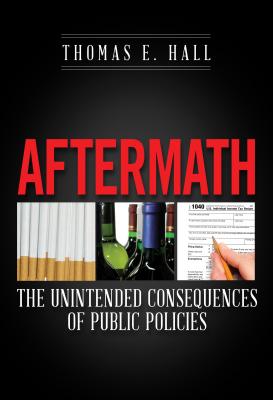Aftermath. Thomas E. Hall
Читать онлайн.| Название | Aftermath |
|---|---|
| Автор произведения | Thomas E. Hall |
| Жанр | Зарубежная публицистика |
| Серия | |
| Издательство | Зарубежная публицистика |
| Год выпуска | 0 |
| isbn | 9781939709394 |
Tax systems structured this way can result in a tyranny of the majority, where the majority of voters impose their will on the minority. To see how that situation can occur, consider a simple case of a country with 100 voters who earn varying amounts of income. This country’s income tax law exempts enough income so that only the top 25 income earners pay income taxes (or pay a disproportionate share of taxes). Thus, the voting population consists of 75 voters who pay no taxes or who pay only small amounts and 25 high-income workers who pay nearly all of the taxes. Now suppose this country’s government is running a budget deficit (perhaps because of burdensome transfer payments to retirees) that causes political leaders to consider higher tax rates as a way to raise additional revenue. A likely outcome is that the 75 voters who are paying small amounts of taxes will support higher tax rates on the 25 who are already paying. The minority (the high-income earners) will oppose this arrangement, but they don’t have the votes to block it. Of course, the situation in the United States is considerably more complicated than this simple example, but the gist of the argument is correct. It helps explain why tax increases are often directed at taxpayers who are a minority of the population. This argument applies to both high-income earners and cigarette smokers, regardless of the rationale offered by their proponents.
Defending the Transfer Payments Status Quo
The U.S. transfer payment expansion took place with widespread public support, and it was funded with income taxes. Social Security and Medicare have been popular programs, in part because many Americans appreciate having a federal “safety net” of pension income and health care insurance during their retirement years.21 Another reason for their popularity is that many beneficiaries collect more during retirement than they paid in taxes while they were working.
Table 2.3 contains calculations on benefits and taxes paid for the Social Security OASDI and Medicare under different income scenarios. These numbers are taken from Steuerle and Rennane (2011) and assume that the income earners paid Social Security and Medicare taxes and that those funds were kept in an account that earned an inflation-adjusted interest rate of 2 percent. The calculated benefit amounts are the funds necessary upon retirement (while still earning 2 percent interest) to pay the beneficiaries’ Social Security and Medicare benefits during their expected retirement years. For example, Case 1 describes a single man who earned the average income each year during his working career (ages 22–64). He retired in 2010 at the age of 65 and began collecting Social Security and Medicare. Assuming he lives the average life expectancy, he loses on Social Security ($290,000 in taxes paid versus $256,000 in benefits) but does well with Medicare ($55,000 paid in taxes versus $161,000 in benefits). The woman in Case 2 earned the same wage as the man in Case 1, which is why she pays the same amount in taxes, but she collects more benefits because of a longer life expectancy.
Конец ознакомительного фрагмента.
Текст предоставлен ООО «ЛитРес».
Прочитайте эту книгу целиком, купив полную легальную версию на ЛитРес.
Безопасно оплатить книгу можно банковской картой Visa, MasterCard, Maestro, со счета мобильного телефона, с платежного терминала, в салоне МТС или Связной, через PayPal, WebMoney, Яндекс.Деньги, QIWI Кошелек, бонусными картами или другим удобным Вам способом.
